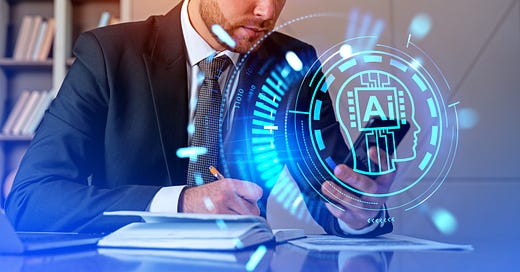AI Scribes in Chiropractic Practice: What You Need to Know Before Hitting Record
Using artificial intelligence to streamline documentation comes with legal and ethical responsibilities
The Rise of AI in Chiropractic Documentation
AI-powered scribes and transcription tools are exploding in popularity promising to save time, reduce paperwork stress, and improve clinical workflow. For chiropractors, these tools can be especially helpful in managing SOAP notes, patient encounters, and daily charting.
But as with any technology that interacts with patient health information, there are important legal, ethical, and compliance concerns that must be addressed.
"Just because an AI tool is marketed to healthcare professionals doesn't mean it's HIPAA-compliant."
HIPAA Still Applies Even with AI
AI scribes often work by recording live conversations between doctor and patient and transcribing them in real-time or shortly afterward. This process involves the capture, storage, and transmission of Protected Health Information (PHI) and that means HIPAA rules apply.
At a minimum, chiropractors must ensure that any vendor:
Signs a Business Associate Agreement (BAA)
Uses encrypted, secure infrastructure
Does not repurpose or retain data improperly
Discloses how PHI is stored and protected
If a company will not sign a BAA or is vague about its security protocols, walk away they are not HIPAA-compliant.
Consent Matters: Patients Have a Right to Know
If you're recording patient conversations, even for legitimate documentation purposes, your patients need to know and consent.
Depending on your state, you may need verbal or written consent to record audio. But beyond legal technicalities, transparency builds trust. Patients have a right to know:
That their conversations are being recorded
That AI is involved in producing part of their medical record
How their data is being stored and for how long
"A simple disclosure isn’t enough, chiropractors should obtain written consent and update their privacy policies to reflect the use of AI-based tools."
You’re Still Responsible for the Records
Even if an AI system helps you write notes, you remain legally responsible for the accuracy, privacy, and clinical relevance of everything in your patient’s record. The software is a tool, not a license to disengage from your documentation responsibilities.
If the AI makes an error, overlooks a key detail, or records something incorrectly, it’s on you to catch it and fix it.
ChiroFutures Can Help
At ChiroFutures, we’re monitoring the rise of AI and other emerging technologies in chiropractic practice. While we do not endorse specific vendors, we can:
Provide risk management guidance
Help you draft a HIPAA-compliant AI consent form
Review your Notice of Privacy Practices (NPP) to ensure it covers AI usage
Answer questions about specific tools you're considering
"AI can make your life easier, but it must be used responsibly, transparently, and in compliance with HIPAA."
Final Thoughts
The integration of AI into chiropractic practice has tremendous potential but it also introduces new layers of complexity. Before adopting any scribe or documentation tool that uses AI, do your due diligence.
Your license, your patients' privacy, and your malpractice risk all depend on getting this right.





